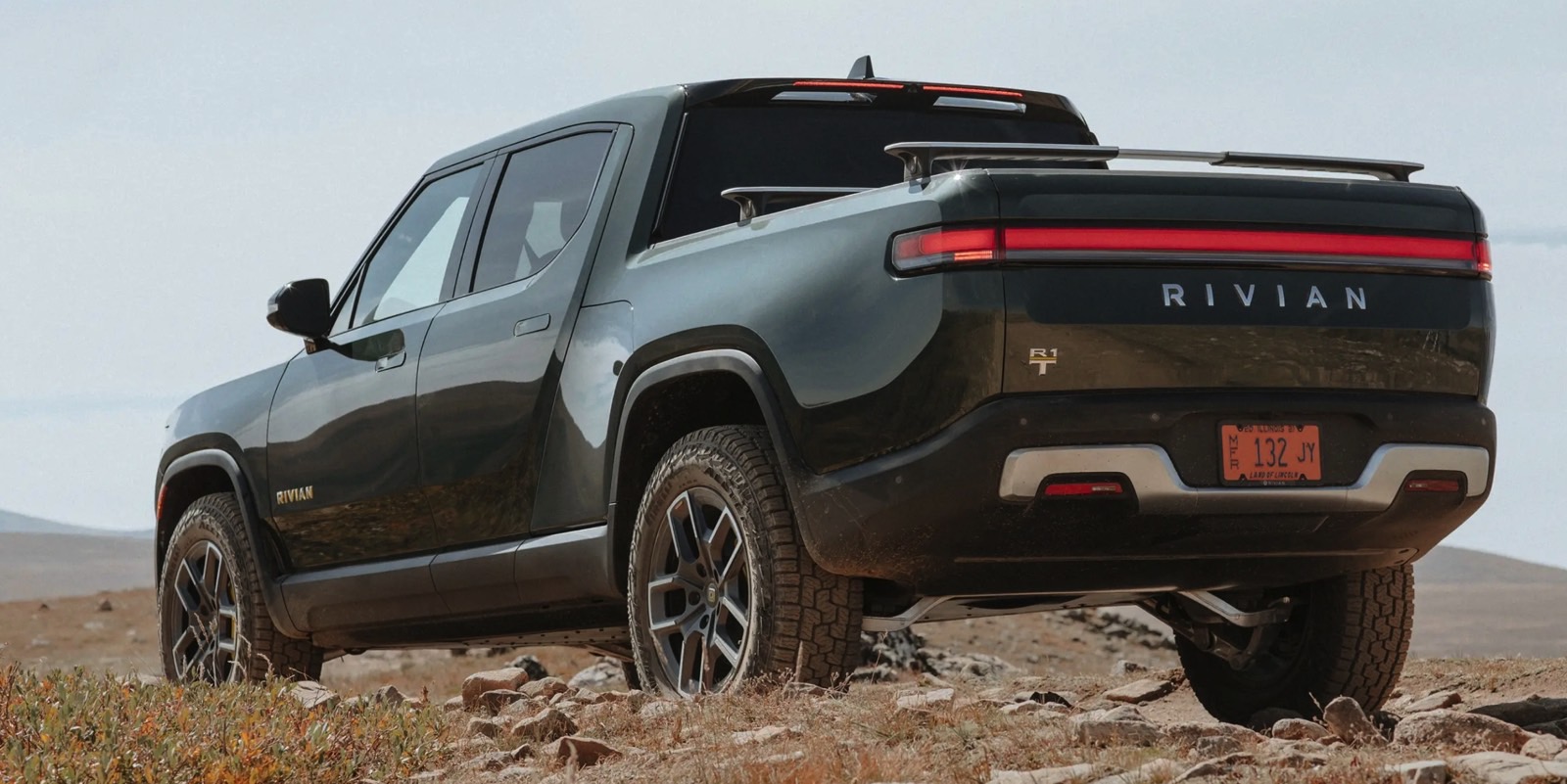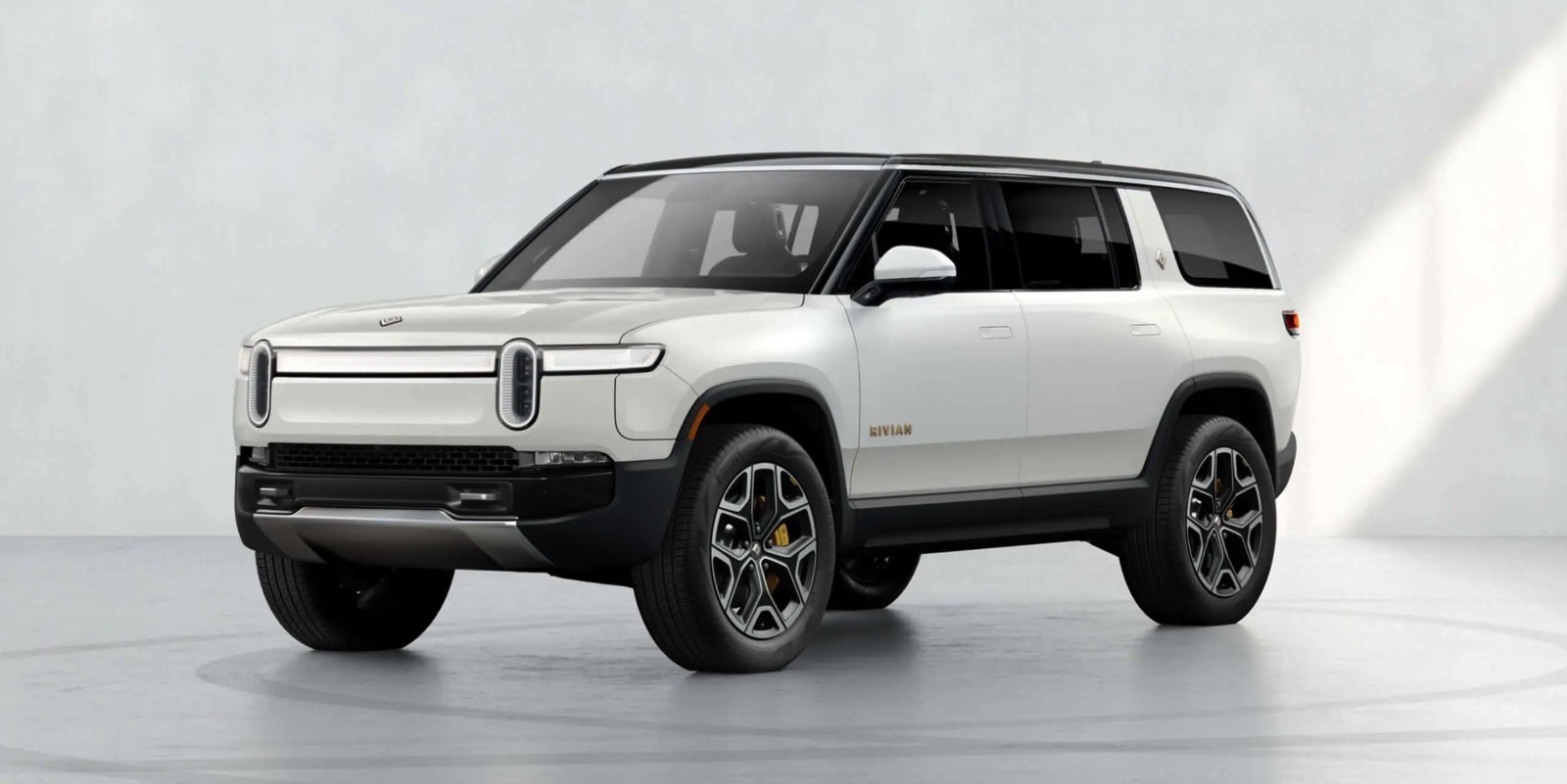Rivian R2 Teased In Company's First Environmental Impact Report
One of Rivian's main goals as an EV automaker has been to innovate throughout its processes to minimize the impact of its vehicles and operations on the environment. Now, we have a sense on how the company is actually doing with those goals.
Today, Rivian released its first-ever social and environmental impact report which covers the company's 2022 fiscal year (January 1, 2022 through December 31, 2022). The company notes that, while its R1T, R1S, and commercial vans help move us to a more sustainable future, the vehicle alone does not solve the environmental challenges.
We know that making and selling electric vehicles is not enough. For EVs to be part of the bigger solution to cut global emissions, we have to pursue innovation in every step of the process. This includes addressing the environmental and community impacts associated with building and driving our vehicles. That's why we've established impact goals to measure and report our progress.
In a statement, Rivian CEO RJ Scaringe said that "The scale of change needed to shift to a sustainable
and renewably powered global economy is staggering.
Our energy grid needs to move entirely away from fossil fuels through the accelerated decommissioning of thousands of carbon-based power plants. These power plants need to be replaced with a range of gridscale and distributed renewable energy sources. As this is happening, our transportation systems must move away from reliance on fossil fuels; different technical solutions will be needed for shipping, air transportation and on-road vehicles. On-road vehicles represent a major component of this and the approximately 1.5 billion combustion-powered vehicles that exist in the world today need to be replaced with electric vehicles. Unfortunately, this transition won't happen overnight and we need many companies working in parallel to achieve it within the next couple of decades.

Despite these environmental goals only being in place for a short period of time, the company is celebrating some successes. It says that its all-electric commercial van emits "50% less carbon emissions compared with gas-powered models," something the company no doubt worked out through its partnership with Amazon. Those vans are going to get into the hands of more brands like AT&T, since Amazon is no longer Rivian's exclusive customer for the vans.
The company has also expanded the Rivian Adventure Network, its in-house charging network that competes with other networks like Tesla's Superchargers. Rivian says that every single Adventure Network charger is powered by 100% renewable energy. Moving on from charging stations, it also plans to "source 100% renewable energy to power our manufacturing plant in Normal, Illinois by 2030. We also intend to power other Rivian facilities with 100% renewable energy."

The company's other major sustainability goals include generating 2GW of renewable energy by 2030 to offset vehicle charging, increasing the percentage of recycled materials in vehicles, and implementing what the company is calling a 360-degree model to "design, keep in use, recover, and reuse vehicles and key materials by 2030."
R2 is definitely getting announced this year
The company also teased the announcement of the R2, Rivian's anticipated platform that will follow its R1 lineup. As suspected, the R2 will be a midsize vehicle, coming in smaller and more affordable than the R1T and R1S.
Our next-generation product line, R2, is being developed to bring the essence of our current products into a midsize form factor and lower price point. From its design, to the integration of hardware and software, to the engineering of the manufacturing process, we plan to leverage our many learnings from R1 to drive down costs while delivering performance features and capabilities that will inspire customers.
Going even past the R2, Rivian says it plans to launch a product by 2030 that will feature "half the lifecycle carbon footprint compared to our 2022 R1 products." It's unclear if that would be a future version of the R1 or R2 or perhaps an entirely new vehicle line. Hello, R3?
Today's report comes as the company draws closer to unveiling the concept for its upcoming R2 platform and the first vehicle to come off of it. That's where the R2 comes in. Rivian has teased its next platform, dubbed the R2, for some time now. Rivian is expected to announce the R2 early this year with a release of the vehicle coming later in 2026. The R2 is rumored to come in at a starting price of $40,000 and, depending on options, top out around $60,000.
However, in today's impact report, the company simply said that "we look forward to unveiling the R2 concept in 2024," so it's unclear if that "early 2024" expectation is correct or if we'll have to wait a bit longer to see what they have in store for us who were priced out of the $70,000+ R1T and R1S but would like to drive a Rivian someday.
